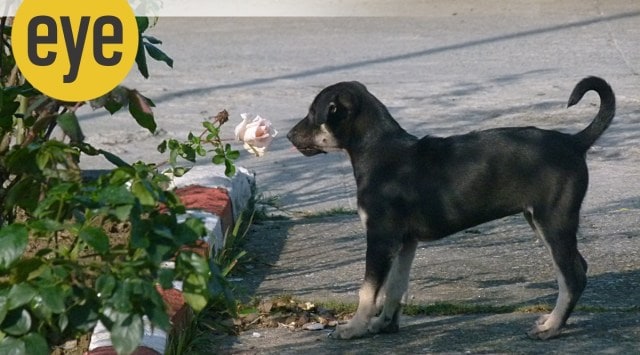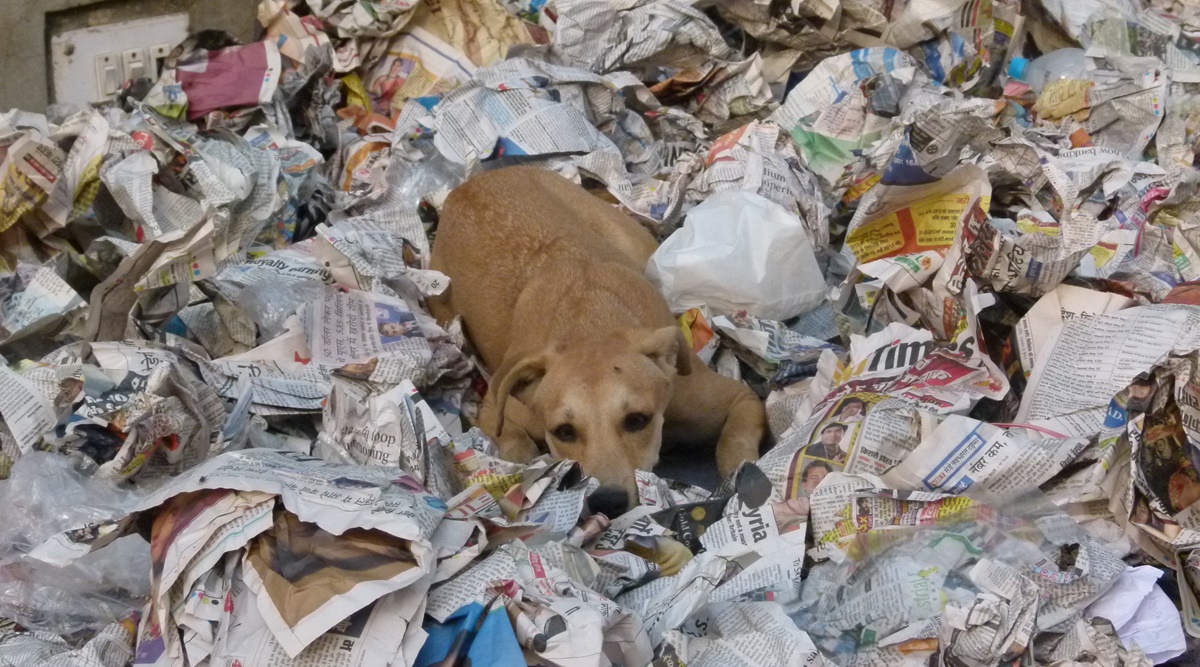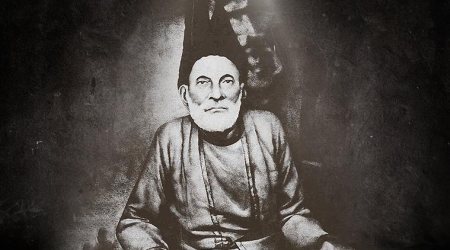How do stray dogs turn into feral packs?
The answer really lies in how the animals are treated in the first place
 What is dicey and dangerous is when dogs form packs (like we form lynch mobs), harking back to their wolf days. This seems to be happening more frequently, both in urban and rural areas. (Credit: Ranjit Lal)
What is dicey and dangerous is when dogs form packs (like we form lynch mobs), harking back to their wolf days. This seems to be happening more frequently, both in urban and rural areas. (Credit: Ranjit Lal) In our early school days, while learning about domestic animals, we were made to chant “Kutta wafadar janwar hain! (The dog is a faithful animal)” And indeed they are: This year has seen the 100th birth anniversary of Japan’s famous Akita, Hachiko, who waited every evening for his dead owner at a railway station for over nine years. He became a symbol of fidelity and faithfulness, and a bronze statue was erected in his memory.
In India, it is claimed that Shivaji Maharaj’s mixed breed dog, Waghya jumped into his master’s funeral pyre and a statue of him was erected at Raigharh Fort. Anyone who has kept a dog knows that this is one member of the family who will greet you with a madly wagging tail, much exuberance and a very licky face-wash when you return from work, school or college every evening, even if you had yelled at it for chewing up your brand new trainers that morning. Leave the house for five minutes and you’ll be greeted back like a long lost prodigal, with much indignant barking implying, ‘Where have you been gone for so long?’
Dogs are very much our best friends and have been so for thousands of years, even if our attitude towards them has been a bit schizophrenic. We use their names like a slur — “Die a dog’s death” or “she is such a bitch!” and, at the other extreme, don them with snazzy shades and absurd party hats, and celebrate their birthdays at Michelin-starred doggie-restaurants!
These days, dogs, both stray and pet, are in the doghouse. Both varieties have been called up for attacking, biting and terrorising children and the elderly — in residential colonies and on the streets. The population of strays has gone through the roof, both in urban and rural areas. This has led to wars between dog-lovers who may feed and care for the strays in their areas, and those who have been chased, bitten or barked at.
How a dog behaves depends a lot on how it has been treated: strays are often chased and beaten or stoned. Naturally, they turn aggressive. Every now and then some sick psychopath will throw a puppy off a roof, or drag it behind his vehicle and video the spectacle and look for ‘likes’ on social media. Imbecile macho owners deliberately train their dogs (usually Rottweilers, German-Shepherds, Mastiffs and Pit-bulls) to be aggressive, and these can turn into very dangerous animals indeed. Such owners and their dogs both need to be socialised and trained how to behave in civilised society.
 After the cataclysmic decline in the population of vultures, the numbers of stray dogs in and around villages ballooned, as the dogs now had no competition for the carcasses they both scavenged on. (Credit: Ranjit Lal)
After the cataclysmic decline in the population of vultures, the numbers of stray dogs in and around villages ballooned, as the dogs now had no competition for the carcasses they both scavenged on. (Credit: Ranjit Lal)
Sterilisation has been touted as one of the ways by which stray-dog populations can eventually be brought in check. Fewer hungry strays roaming the streets and fighting over garbage means fewer hyper dogs and incidents. It would work perhaps, if properly implemented. The other cure being touted is that strays should be rounded up and “humanely” euthanised. Sure, if a dog has savagely attacked your child your immediate reaction would be of fear and repulsion. But most dogs – strays or pets – do not attack unprovoked. Those poor beasts afflicted with rabies are not in control of themselves and here we really have no choice. In many countries in the so-called animal loving West, strays are rounded up, kept in the pound for a stipulated period of time (say a week) and then “put down”. Of course they love their dogs very much, but not so much as to look after them. Even retired service dogs have been given this treatment.
What is dicey and dangerous is when dogs form packs (like we form lynch mobs), harking back to their wolf days. This seems to be happening more frequently, both in urban and rural areas. Wherever packs collect, there will be trouble. Once their hunting instincts kick in, the victim is more or less done for. After the cataclysmic decline in the population of vultures, the numbers of stray dogs in and around villages ballooned, as the dogs now had no competition for the carcasses they both scavenged on. In some places, these packs have caused serious problems for wildlife, including endangered species.
One of my all-time favourite breeds (apart from the Boxer) is the Tibetan Mastiff. These huge, shaggy, lion-like dogs, bred to guard livestock are at home in the Himalayas and are fierce outdoor animals. Now, in Ladakh, as Arati Kumar-Rao writes in her recent book, Marginlands, Tibetan-Mastiffs have run amuck. Some 30,000 Mastiffs roam these bleak mountainous areas, feeding off garbage thrown out by Army camps and creating havoc with local wildlife and people – including the highly endangered Black-necked crane. No, don’t tell me that if I seem to be so concerned I should perhaps adopt at least one or two of them – Delhi is no place for such furry beasts! Often foreign natural-history documentary makers go gaga over us, saying we inherently respect and care about nature and all its denizens. Be it snakes, rats, leopards, pigeons or monkeys, we make space for them in our crowded environs. As for dogs, stray or domestic, perhaps, in addition to making toddlers chant “kutta wafadar janwar hain”, we need to teach them how to treat these animals with love so that they remain faithful to us and not turn feral.
Aug 14: Latest News
- 01
- 02
- 03
- 04
- 05
































